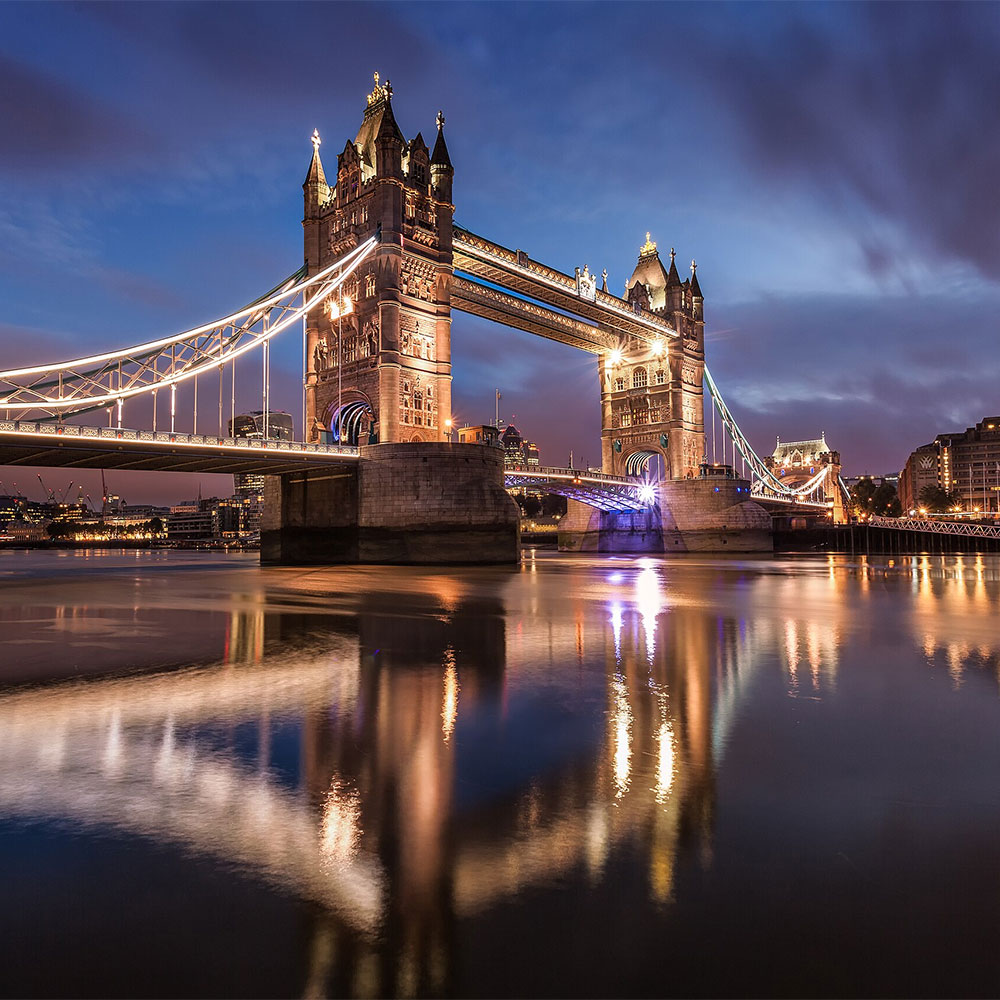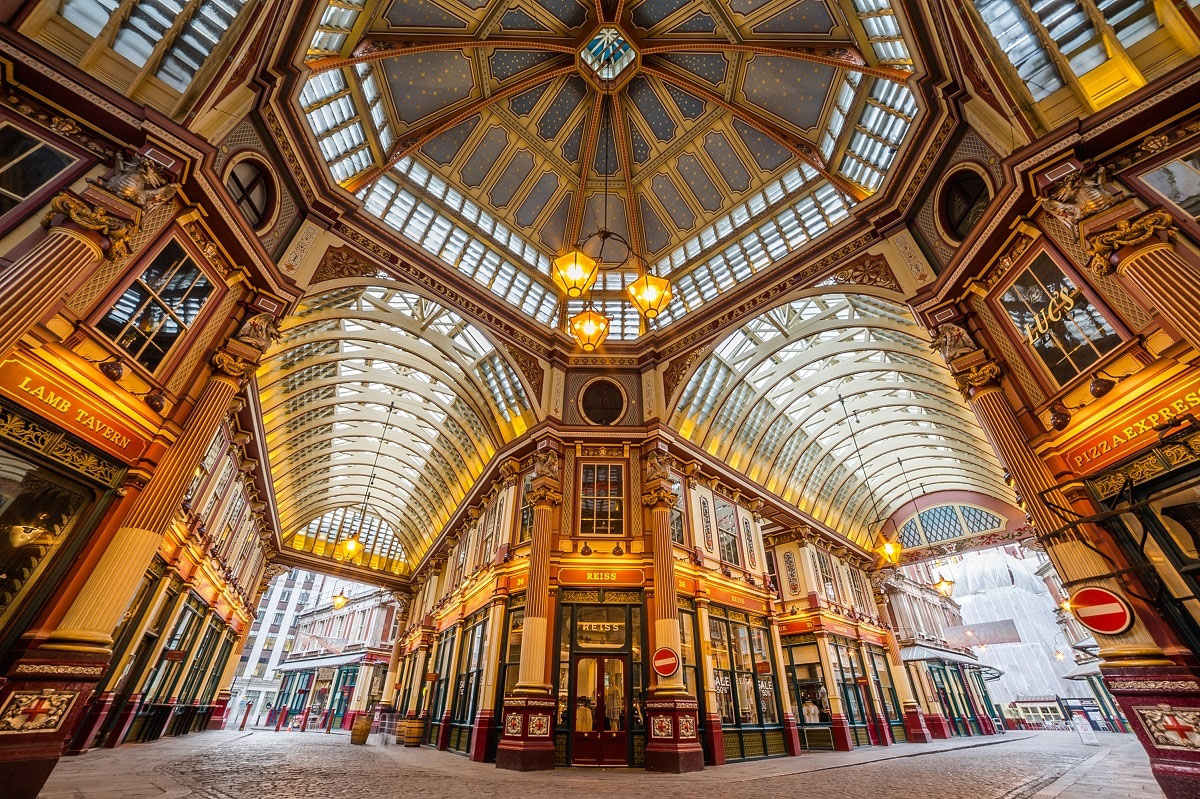
19th Century Architecture
in London
19th century
British Museum 1823 – present
MAP | WEST LONDON, BLOOMSBURY
Architects: Robert Smirke, John Russell Pope, Spencer de Grey, Sydney Smirke, John James Burnet, John Taylor
Discover two million years of human history and culture. The British Museum is a public museum dedicated to human history, art and culture located in the Bloomsbury area of London. Its permanent collection of eight million works is the largest in the world. It documents the story of human culture from its beginnings to the present.
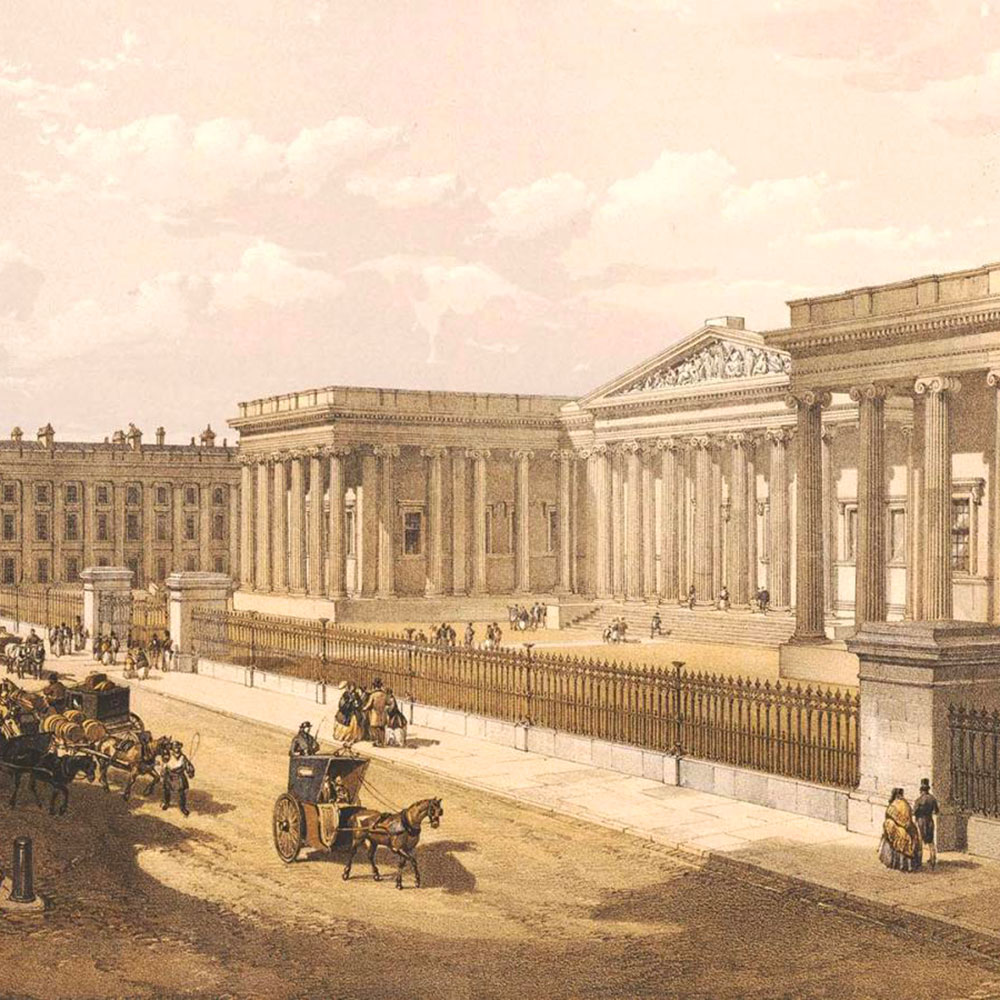
Lancaster House, 1825-1838
MAP | WEST LONDON, ST. JAMES
Architects: Benjamin Dean Wyatt, Sir Charles Barry, Sir Robert Smirke
Lancaster House is a mansion on The Mall, one of handful of historic buildings remaining on Green Park. With its ornate decoration and the dramatic sweep of the great staircase, the Grand Hall is a magnificent introduction to one of the finest town houses in London. Constructed from Bath stone in a neo-classical style, the completed building was three floors in height, the State rooms being on the first floor or piano nobile, family living rooms on the ground floor and family bedrooms on the second floor. There was also a basement containing service rooms and wine cellar. The interior, featured an imperial staircase which was designed by Sir Charles Barry, as well Louis XIV Style rooms which were lavishly decorated.
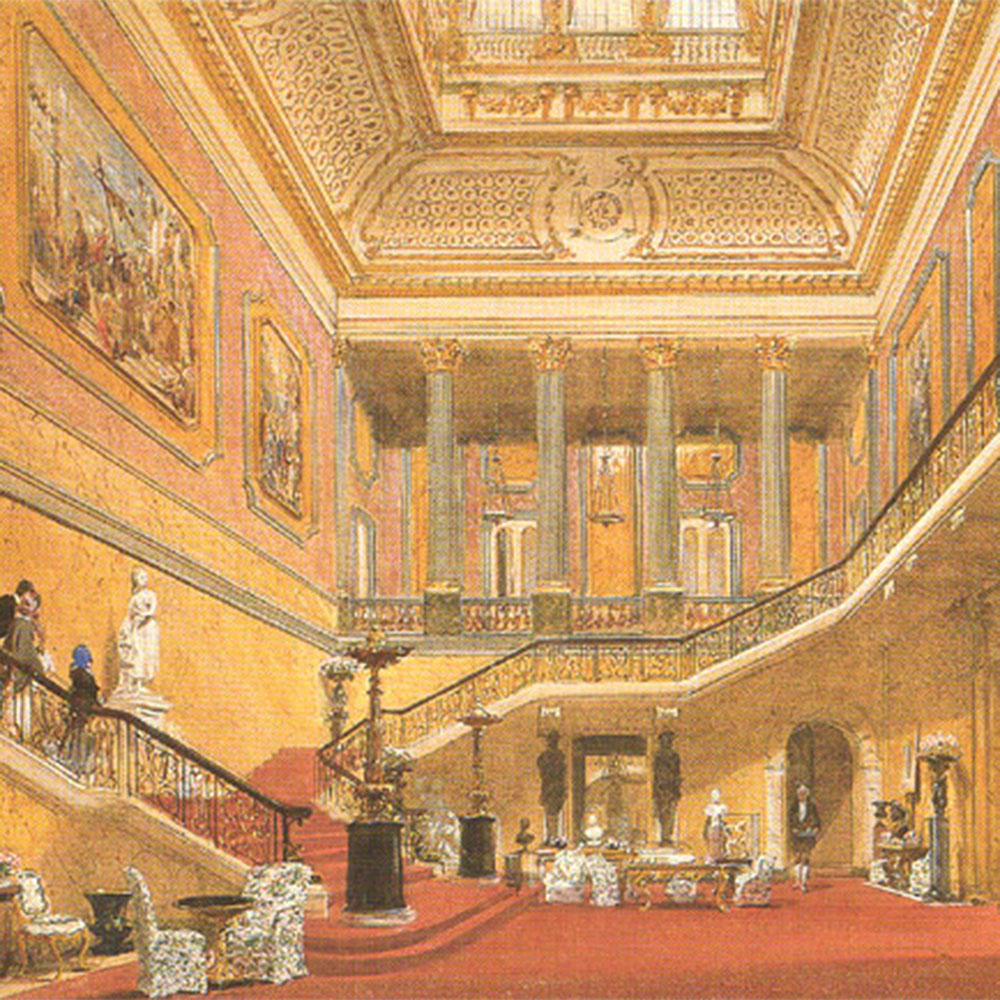
National Gallery, 1831-38
MAP | WEST LONDON, TRAFALGAR SQ.
Architects: William Wilkins, Robert Venturi, Denise Scott Brown, Selldorf Architects
The National Gallery is an art museum in Trafalgar Square in the City of Westminster, in Central London, England. Founded in 1824, it houses a collection of more than 2,300 paintings dating from the mid-13th century to 1900.
Open Daily, 10am – 6pm, Friday lates until 9pm
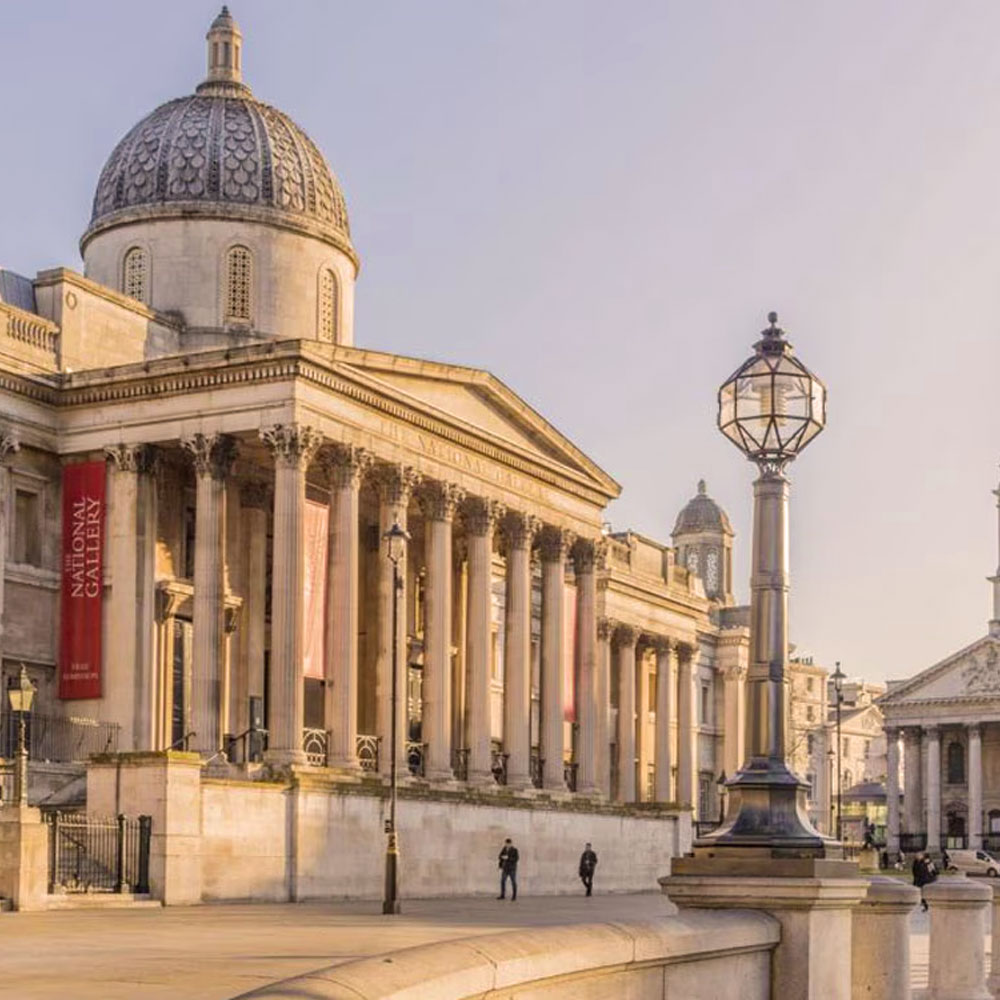
Bridgewater House, 1840
MAP | WEST LONDON, ST. JAMES
Architect: Sir Charles Barry
One of three palatial edifices – the others are Spencer House and Lancaster House – almost side by side facing Green Park from Cleveland Row in what may be the last stand of the great aristocratic residences. The building’s current Palazzo-style design was by Sir Charles Barry, dating from 1840, although different versions have been on the site for much longer and Bridgewater House did not acquire its present name until 1854, when it was owned by Lord Ellesmere, heir of Francis Egerton, 3rd Duke of Bridgewater. The house had been in the Egerton family since 1700. Ellesmere had the unusual distinction of having an island named after him, one almost as big as Great Britain. Privately owned by the Latsis family.
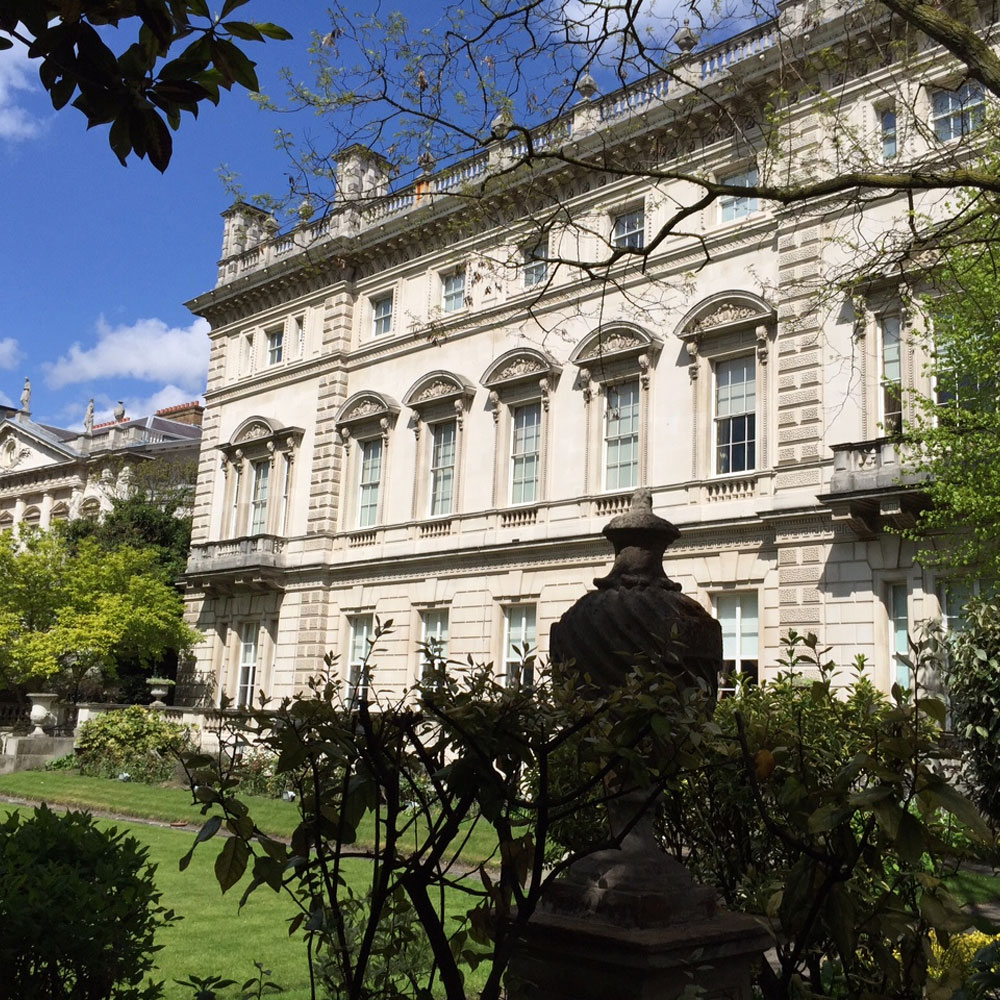
Duck Island Cottage, 1840
MAP | WEST LONDON, ST. JAMES
Architect: John Burges Watson
The histories of Duck island Cottage and the birds of St. James Park are a hot mess. Birds of various kinds have been kept here since 1612 when an aviary was established and waterfowl, both native and foreign, found refuge in the park despite the presence, elsewhere in the gardens, of two crocodiles. In 1840, the cottage architect John Burges Watson was engaged by the Society to design the Bird Keeper’s Cottage. Watson produced a small, irregular composition, comprising a cottage and clubroom for the Society, trimmed with ornamental barge-boards finials and ridge-tiles. This gingerbread Cottage Orné, of vaguely Swiss inspiration, was calculated to contrast with the increasingly monumental architecture of the Government Offices being erected in nearby Whitehall. Vigorously remodeled over the years, the cottage provided a utilitarian home to two spinster park keepers who lived there until 1980.

Houses of Parliament, 1840-60
MAP | WEST LONDON, WHITEHALL
Architects: Sir Charles Barry, Augustus Pugin
The history of the Houses of Parliament spans over 900 years from the Anglo-Saxons to the present. The Palace of Westminster is the meeting place of the Parliament of the United Kingdom and is located in London, England. It is commonly called the Houses of Parliament after the House of Commons and the House of Lords, the two legislative chambers which occupy the building.
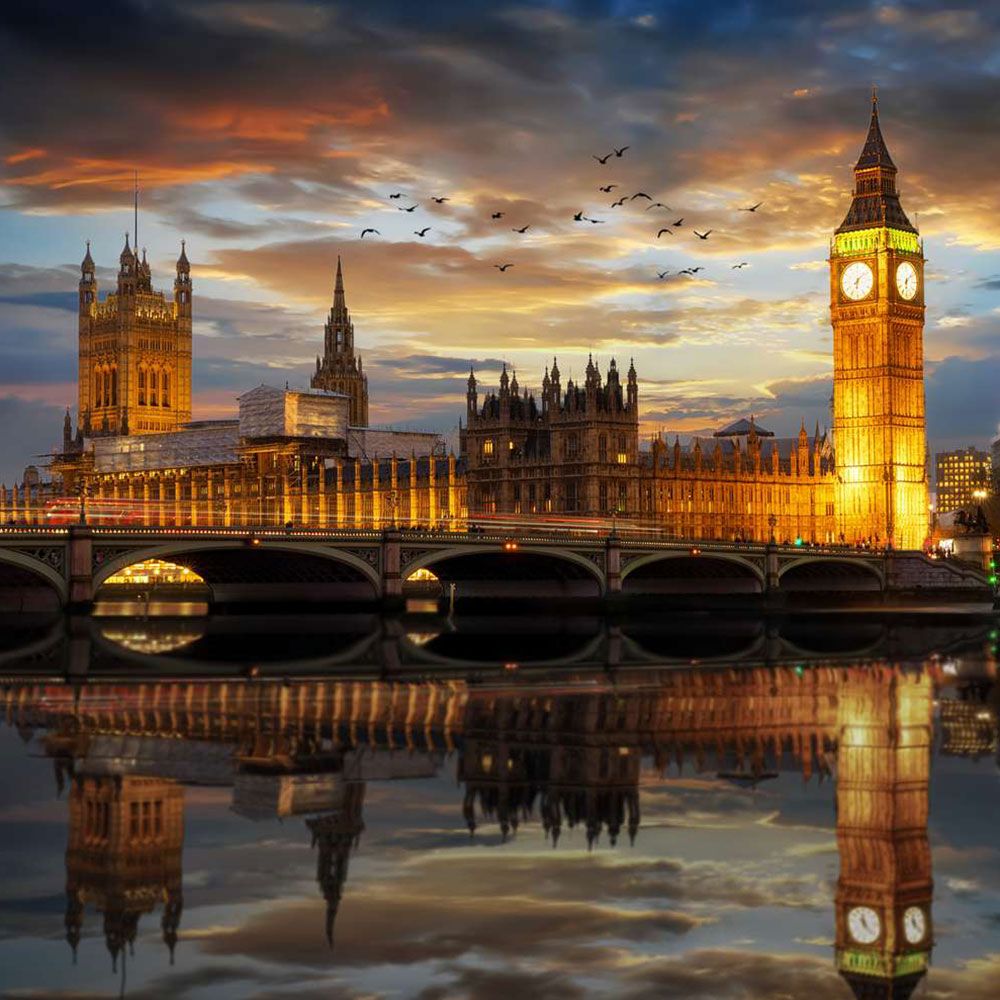
Kew Gardens Glasshouses, 1844
MAP | KEW, RICHMOND
Architects: Decimus Burton, Nicole Burton, Richard Turner
The beautiful, ornate glass and iron Palm House is a large palm house in Kew Gardens that specializes in growing palms and other tropical and subtropical plants. It was completed in 1848 and was the first greenhouse to be built on this scale.
The Temperate House, opened in May 1863, is a Grade I-listed showhouse for the largest plants in Kew Royal Botanic Gardens. Rectangular, with pitched roofs, its pillars support wrought-iron ribs. The House is a mix of decorative motifs, finials, pediments, acanthus leaf capitals, Coade stone urns and statues.
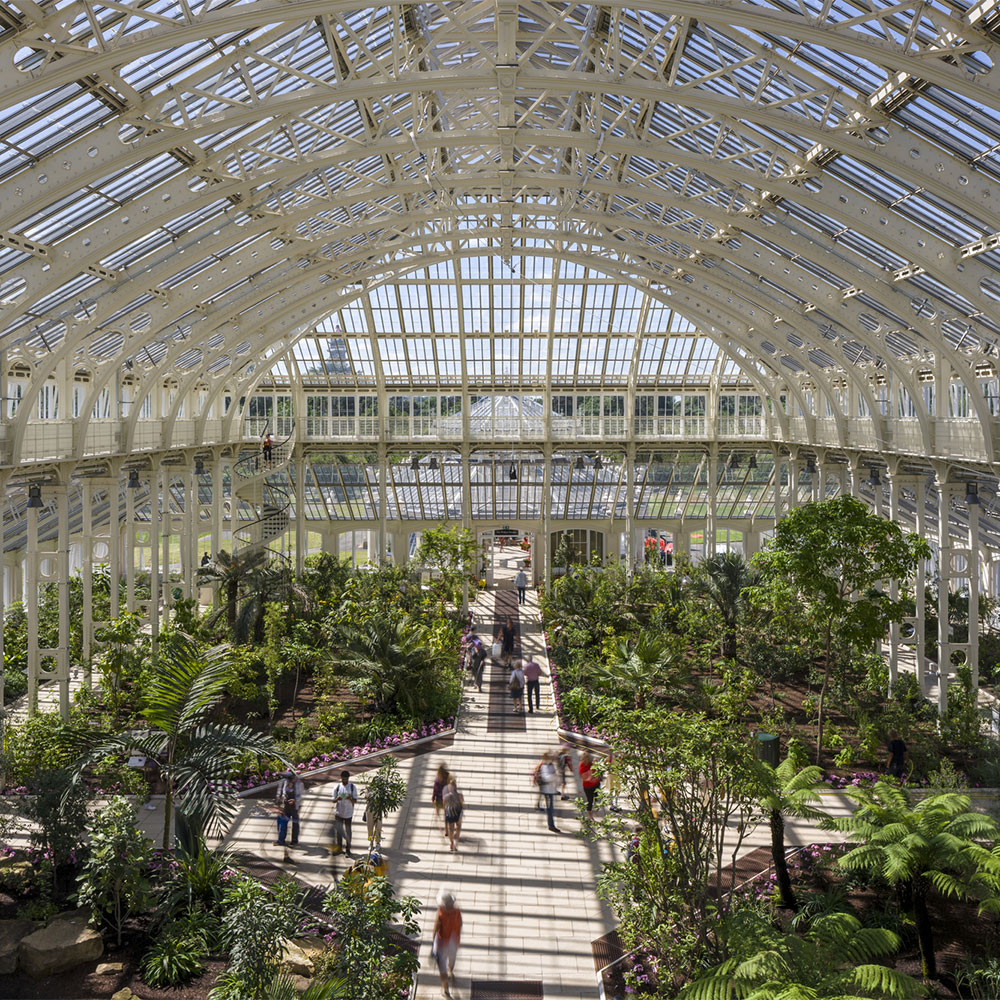
Victoria and Albert Museum, 1852 – present
MAP | WEST LONDON, SOUTH KENSINGTON
Architects & Designers: Francis Fowke, Godfrey Sykes, Henry Scott, Aston Webb, Francis Moody, Owen Jones, William Morris, Edward Poynter, Frederic Leighton, William de Morgan, Amanda Levete, Eva Jiřičná, Kim Wilkie
For almost 175 years, the V&A museum has been almost constantly under renovation. Some highlights to consider are: the Cromwell Road Foyer and Façade, the Henry Cole Wing, the marvelous Exhibition Road Courtyard, the Ceramic Staircase, the exquisitely-appointed cafe, the massive cast courts among other
Over the years, all the architects, designers, modelers, ceramicists, stone carvers, painters and landscapers have sensitively and brilliantly unified the museum’s jumble of Victorian buildings to provide suitable context for the millions of objects on display. Open Daily: 10am–17.45pm, Fri: 10am–22pm
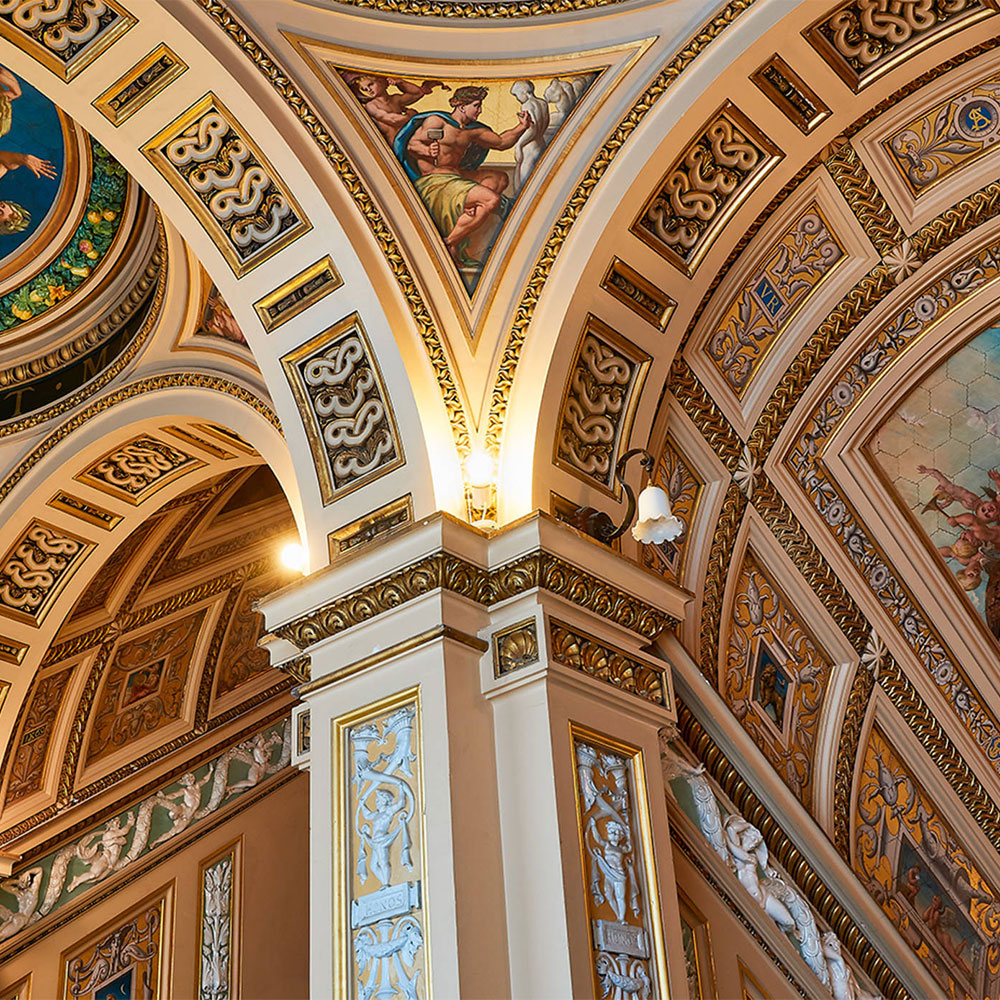
Leighton House Museum, 1864
MAP | WEST LONDON, HOLLAND PARK
Architect: George Aitchison
One of my absolute favorites! The Leighton House Museum is an art museum and historic house in the Holland Park area in west London.
The building was the London home of painter Frederic Leighton, 1st Baron Leighton (1830–1896), who commissioned the architect and designer George Aitchison to build him a combined home and studio noted for its incorporation of tiles and other elements purchased in the Near East to build a magnificent Qa’a (room).
Open Wed-Mon, 10am–5:30pm (last entry 4:30pm)
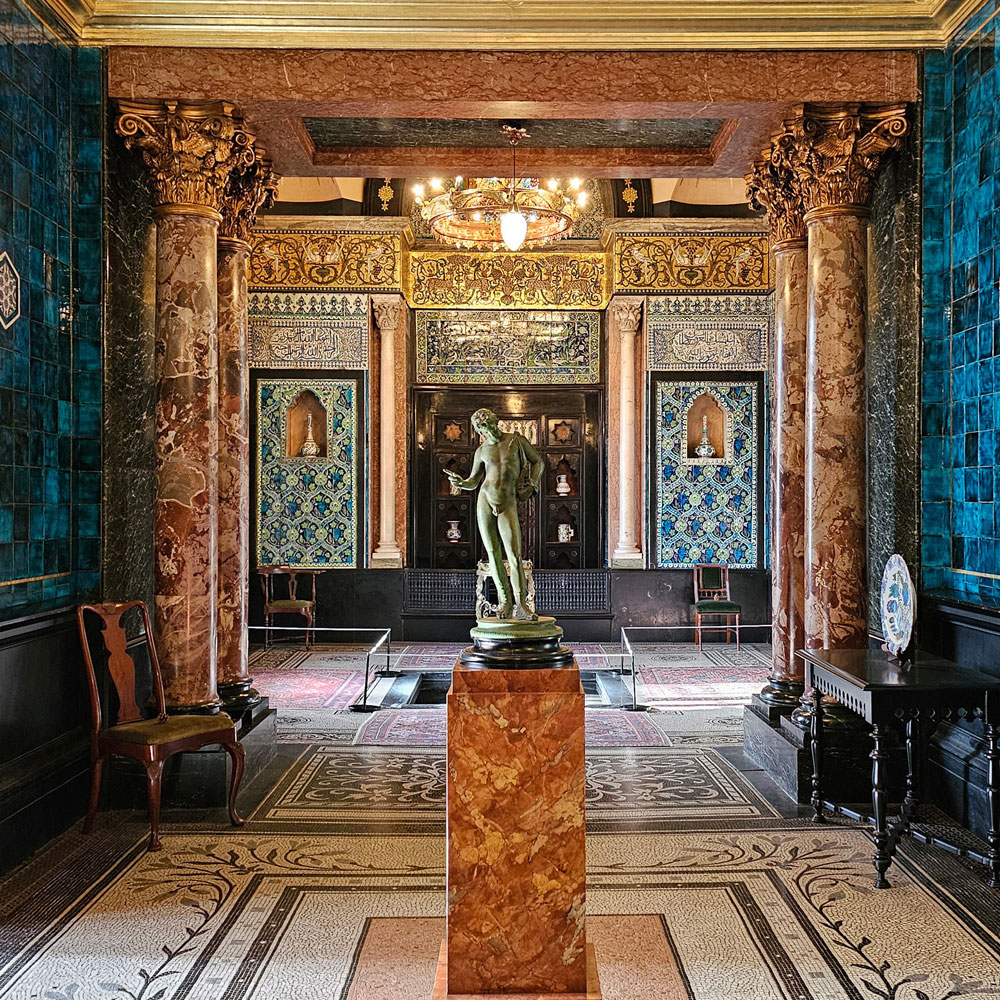
Natural History Museum, 1866-1883
MAP | WEST LONDON, SOUTH KENSINGTON
Architects: Francis Fowke, Alfred Waterhouse
In 1864 Francis Fowke, the architect who designed the Royal Albert Hall and parts of the Victoria and Albert Museum, won a competition to design the Natural History Museum. When he unexpectedly died a year later, the relatively unknown Alfred Waterhouse took over and came up with a new plan for the South Kensington site. Waterhouse used terracotta for the entire building as this material was more resistant to Victorian London’s harsh climate. The result is one of Britain’s most striking examples of Romanesque architecture, which is considered a work of art in its own right and has become one of London’s most iconic landmarks. Open Daily: 10am-17.50pm
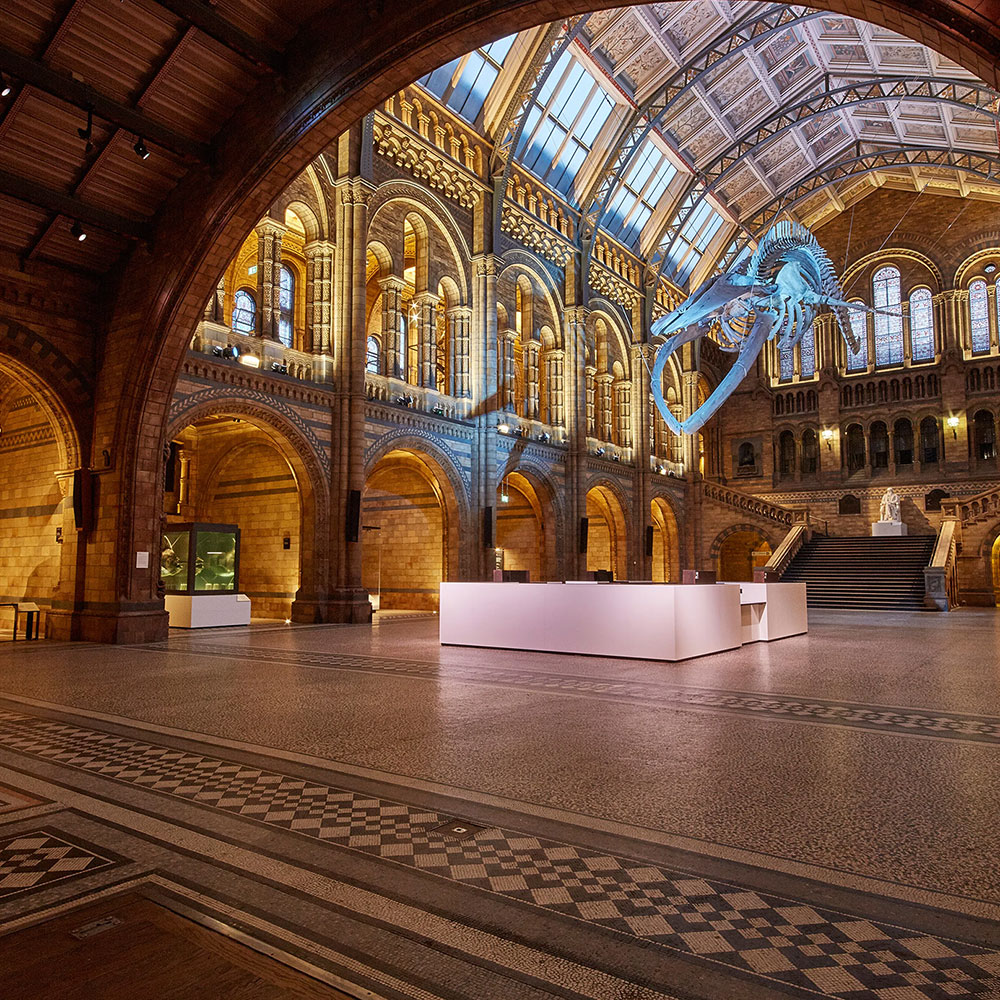
Royal Albert Hall, 1867-1871
MAP | WEST LONDON, NORTH KENSINGTON
Architects: Francis Fowke, Henry Young Darracott Scott
The Royal Albert Hall was constructed between 1867 and 1871. Initially intended to be named the Central Hall of Arts and Sciences, it was renamed the Royal Albert Hall of Arts and Sciences by Queen Victoria in 1867 when she laid the foundation stone. The official opening ceremony took place on March 29, 1871. The Hall’s distinctive exterior is built from over 6 million red bricks and 80,000 blocks of terracotta and includes a continuous 800 foot long terracotta frieze. The Hall’s main auditorium is 185 feet wide by 219 feet long and is covered by a glazed dome.
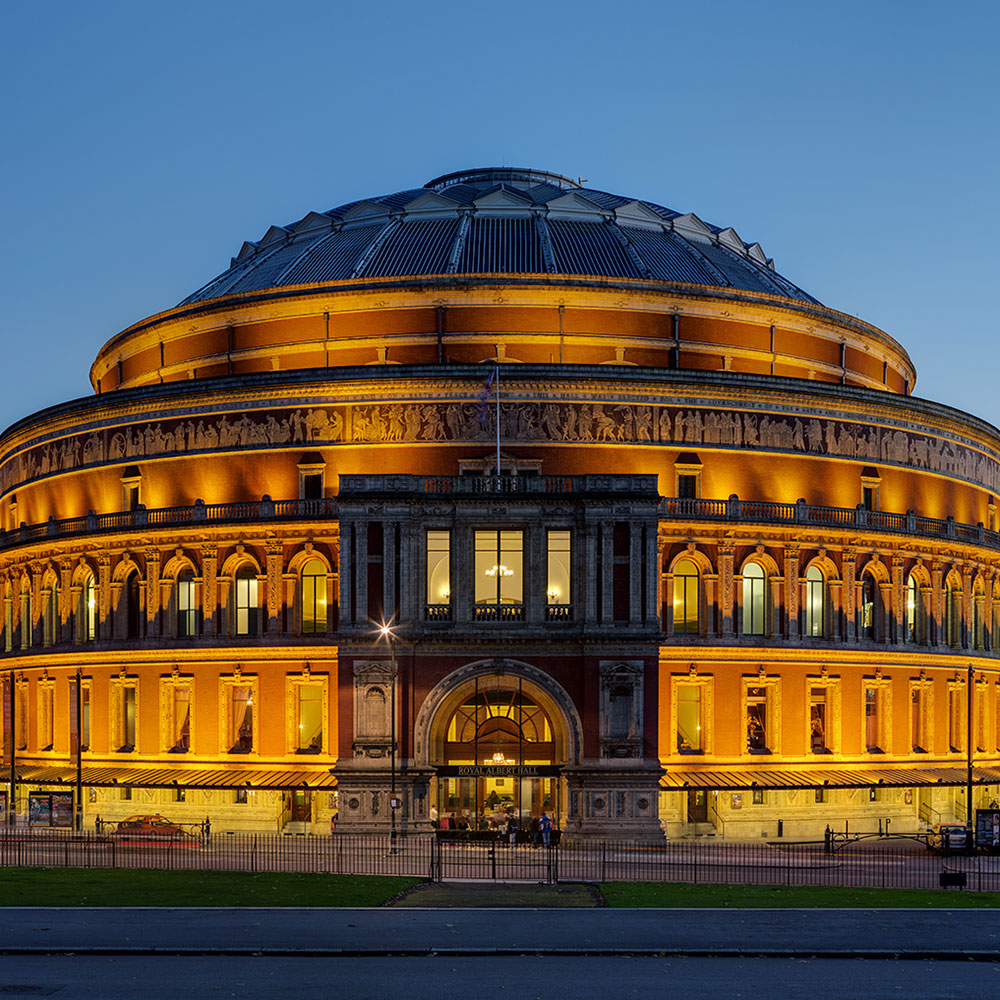
18 Stafford Terrace, Linley Sambourne House, 1872
MAP | WEST LONDON, KENSINGTON
Architect: Joseph Gordon Davis
Sambourne House is a wonderful time capsule of a museum, revealing much about how Victorians lived with Aesthetic interiors. The home of the Punch illustrator Edward Linley Sambourne (1844–1910), the museum gives insight into upper-middle-class family life in the later Victorian/Edwardian period.
Aesthetic influences can still be seen permeating throughout the house, from decorative Sunflower motifs in the stained glass windows, to the fine selection of William Morris wallpapers that hang within the rooms, through to the displayed collection of blue-and-white Chinese import porcelain.
Open Wed-Mon, 10am–5:30pm (last entry 4:30pm)

Leadenhall Market, 1881
MAP | EAST LONDON, CITY OF LONDON
Architect: Horace Jones
Leadenhall Market, originally a meat, poultry and game market, dates back to 1321 and was situated in what was the centre of Roman London. Situated in the centre of the City of London’s financial district, the current Grade II listed Market building, designed by Horace Jones, dates back to 1881. Its airy and light wrought iron and glass structure replaced the stone market previously created by Lord Mayor of London, Dick Whittington in the 15th Century.
It is now home to a number of boutique retailers, restaurants, cafes, wine bars and an award-winning pub.
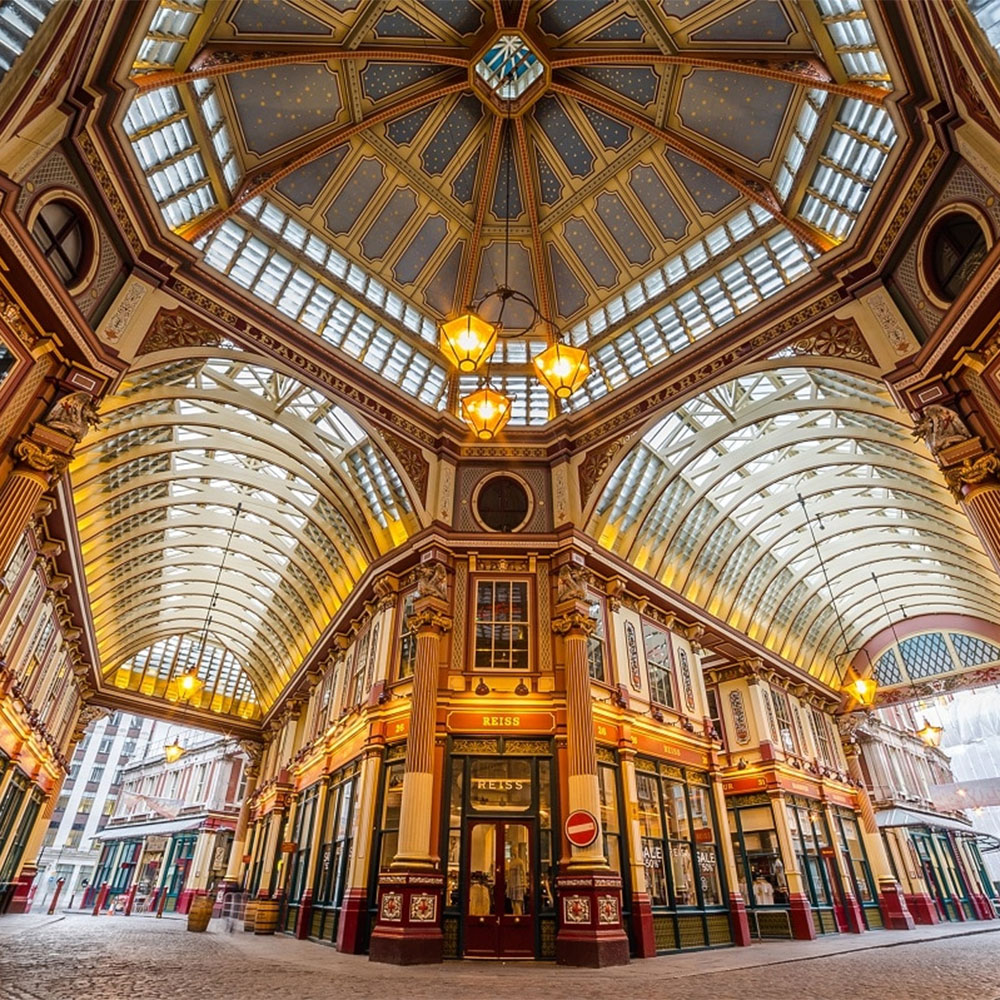
Tower Bridge, 1886-1894
MAP | EAST LONDON
Architects: Horace Jones, John Wolfe Barry, Henry Marc Brunel
Tower Bridge is a Grade I listed combined bascule, suspension, and, until 1960, cantilever bridge in London, built between 1886 and 1894, designed by Horace Jones and engineered by John Wolfe Barry with the help of Henry Marc Brunel.
Two massive piers were built on foundations sunk into the riverbed to support the construction, and over 11,000 tons of steel provided the framework for the Towers and Walkways. Tours are available if you want to get inside those wonderfully Gothic towers and stagger over the high-level walkways.
